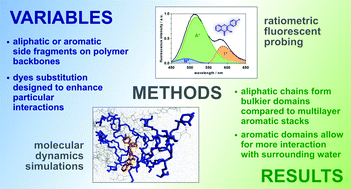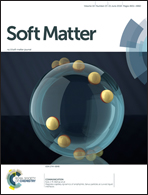Probing the self-assembly dynamics and internal structure of amphiphilic hyaluronic acid conjugates by fluorescence spectroscopy and molecular dynamics simulations†
Abstract
Polymeric nanoparticles are increasingly used as biocompatible carriers for drugs and imaging agents. Understanding their self-assembly dynamics and morphology is of ultimate importance to develop nanoformulations with optimal characteristics. To achieve better performance, it is vital to account for cargo–carrier interactions at the molecular level. The self-assembly dynamics were studied and the internal structure of nanoparticles derived from a series of hydrophobically modified hyaluronic acid was revealed. Environment-sensitive ratiometric fluorescent probes provide valuable information about the nanoparticle's interior morphology, and molecular dynamics simulations complement the overall picture with insights into intramolecular and intermolecular interactions of the polymer, as well as its interactions with the small-molecule load. van der Waals and π–π interactions of the hydrophobic side fragments play a leading role in self-assembly and loading of hydrophobic small molecules. Aliphatic substituents form more extensive hydrophobic domains, while aromatic moieties allow more interaction of the loaded small molecules with the surrounding solvent.



 Please wait while we load your content...
Please wait while we load your content...